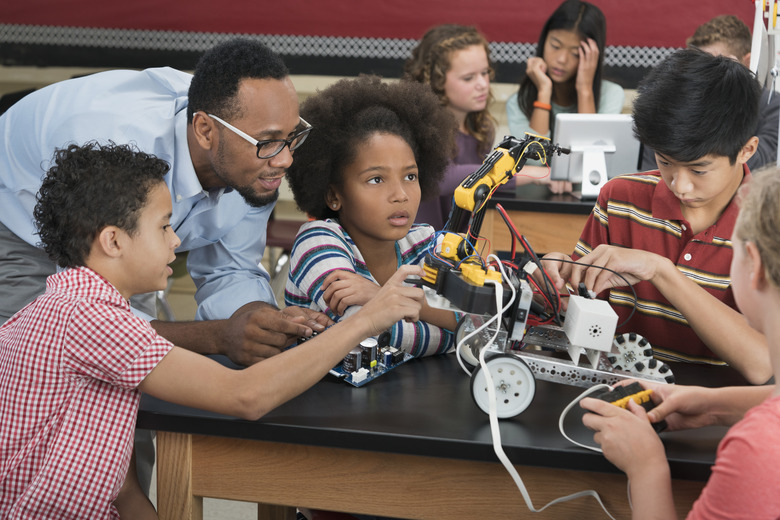Science Fair Ideas With The Topic Dance
While dancing is an art form and a type of self-expression, all types of dance present a wide variety of opportunities to study science, as well. From the biological and mechanical basics that make human movement possible to the more advanced physical traits of complicated motions of balance, the topic of dance brings with it a number of excellent inspirations for science fair projects.
Science of Spotting
Science of Spotting
For this project, study the science behind spotting. Spotting is a technique used by ballet dancers to avoid dizziness while spinning, where the dancer keeps her eyes fixed to a single spot and spins her head in one quick turn during a spin, rather than spinning along with the rate of the rest of her body. Examine the anatomical causes of balance vs. dizziness and assess why it is that spotting prevents the latter.
Balance Practice
Balance Practice
For a science fair project based on balance, look at how dancers are able to balance their bodies in precarious positions. Specifically, look at how balancing is based in micro-movement, rather than keeping completely still. Compare the tiny movements of a dancer's balanced body to other types of structures, such as shock absorbers or architectural designs.
Rotation Science
Rotation Science
Study the science of rotation and how it affects movement in dance. Use dancer volunteers to help you with experiments designed to study how different factors in the shape of a dancer's body or the type of leverage achieved for a spin will affect the speed and number of rotations they can achieve from a single push-off. Examine factors like potential energy and wind resistance.
Dancing Health and Science
Dancing Health and Science
With this fair theme, explore the various ways in which healthy habits improve conditions for dancers and why. Examine topics like stretching or potassium intake and how these things can help prevent muscle cramps, or factors like anatomy and how it relates to the difference between proper and improper techniques and causes of injury. Try to design and build some functional experimental models that be used to show the effects of improper pressure on joints, tendons and ligatures.
Physical Coordination and Dance
Physical Coordination and Dance
Using this theme, perform statistical experiments to test whether intensive study of dance improves basic physical coordination. Use simple tests (such as catching a thrown ball or dropped ruler) to study the reflexes of two groups of people; those with advanced dance training and those with little or no dance experience. Check the two sets of data to see if dancing skills affect reflexes and response time in other areas.
Cite This Article
MLA
Vork, Lauren. "Science Fair Ideas With The Topic Dance" sciencing.com, https://www.sciencing.com/science-fair-ideas-with-the-topic-dance-12751708/. 25 June 2018.
APA
Vork, Lauren. (2018, June 25). Science Fair Ideas With The Topic Dance. sciencing.com. Retrieved from https://www.sciencing.com/science-fair-ideas-with-the-topic-dance-12751708/
Chicago
Vork, Lauren. Science Fair Ideas With The Topic Dance last modified August 30, 2022. https://www.sciencing.com/science-fair-ideas-with-the-topic-dance-12751708/
